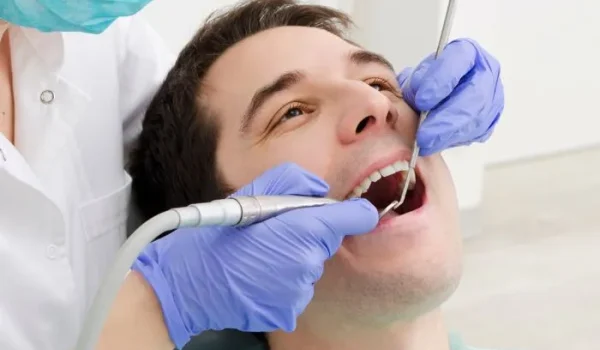Patient Safety
Safety first!
Dental safety is essential for protecting both dental professionals and patients during dental procedures. Some of the most common safety measures we use include:

Dental equipment sterilization is an essential part of ensuring a safe and hygienic environment for dental procedures. It involves the use of various methods and techniques to kill or eliminate harmful microorganisms that may be present on dental instruments and equipment.
One of the most common methods of sterilization is autoclaving, which uses high-pressure steam to kill bacteria, viruses, and other pathogens. Another method is dry heat sterilization, which uses hot air to sterilize instruments. Chemical sterilization, using liquid or gas chemical agents, is also an option, although it may not be as effective as other methods.
Proper sterilization protocols should be strictly followed to ensure that all equipment is effectively sterilized. This includes cleaning and decontaminating instruments before sterilization, carefully packaging them to prevent contamination after sterilization, and regularly monitoring the sterilization process to ensure efficacy.
Dental safety equipment is essential for protecting both dental professionals and patients during dental procedures. Some of the most common safety equipment used in dental offices includes:
Face Masks: Face masks are used to protect both the dental professional and the patient from the spread of infectious diseases. They are designed to filter out airborne particles, such as bacteria and viruses.
Gloves: Gloves are worn by dental professionals to prevent the spread of infectious diseases and to protect against exposure to chemicals and other hazardous materials.
Protective Eyewear: Protective eyewear, such as safety glasses or goggles, are worn to protect the eyes from exposure to debris, chemicals, and infectious materials.
Lab Coats: Lab coats are worn by dental professionals to protect their clothing from contamination during procedures. They are also designed to prevent the spread of infectious diseases.
Sterilization Equipment: Sterilization equipment is used to sterilize instruments and equipment between patients to prevent the spread of infectious diseases.
X-Ray Aprons: X-ray aprons are worn by patients during dental x-rays to protect them from exposure to radiation.
High-Volume Evacuation Systems: High-volume evacuation systems are used to remove debris and fluids from the patient’s mouth during procedures to prevent the spread of infectious diseases.
Digital X-rays: Digital x-rays are faster and more accurate than traditional film x-rays. They also emit less radiation, making them safer for patients.
Intraoral Cameras: Intraoral cameras are small, handheld cameras that allow dental professionals to capture images of the inside of the mouth. This technology enables dentists to detect problems that may not be visible to the naked eye.
Dental Lasers: Dental lasers are used in a variety of procedures, including teeth whitening, gum reshaping, and cavity removal. They are less invasive than traditional methods, resulting in less pain and faster healing times.
CAD/CAM Technology: CAD/CAM technology is used to create custom dental restorations like crowns, bridges, and veneers. This technology eliminates the need for messy impressions and temporary restorations, allowing for faster and more accurate results.
3D Printing: 3D printing is used to create dental models, surgical guides, and custom dental implants. This technology allows for precise and accurate results and can reduce the time and cost of dental procedures.
Cone Beam CT Scans: Cone Beam CT scans provide detailed 3D images of the teeth, jawbone, and surrounding structures. This technology is often used in dental implant procedures, allowing for more accurate placement and improved outcomes.
Electric Handpieces: Electric handpieces are quieter, more precise, and less traumatic than traditional air-driven handpieces. They also generate less heat, reducing the risk of tooth damage during procedures.
Standard Operating Procedures: Standard operating procedures should be established and followed for all dental procedures, including infection control procedures, instrument sterilization, and patient communication.
Staff Training: All staff members should receive regular training on proper procedures and techniques to ensure that everyone is working in a consistent and efficient manner.
Patient Safety: Patient safety is of utmost importance. Dental professionals should take all necessary precautions to prevent the spread of infectious diseases and ensure the safety of their patients during procedures.
Equipment Maintenance: All dental equipment should be properly maintained and inspected regularly to ensure that it is working properly and safely.
Quality Control: Regular quality control checks should be performed to ensure that all procedures and protocols are followed correctly and that the highest level of quality care is being provided to patients.
Patient Feedback: Patient feedback should be regularly collected and used to improve procedures and patient care. This feedback can be collected through surveys or other means of communication.
Continuing Education: Dental professionals should participate in continuing education courses to stay up-to-date on the latest dental procedures and technologies. This will ensure that they are providing the best possible care to their patients.



